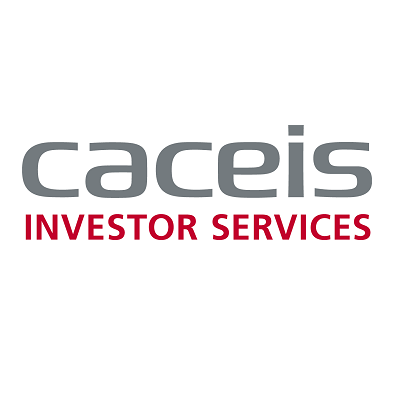At the heart of SDR is a labelling regulation, with some associated disclosures. The expectation is that there’s likely to be a gradual introduction of fund labelling by asset managers and ACDs, which means not everyone will be seeking labels in July – some see ‘first mover advantage’ opportunities, others plan to adopt a ‘wait and review’ approach. In any event, given the need to provide evidence-based standards, there is likely to be a bigger focus on access to good quality data. As SDR approaches, training is becoming a priority across many business functional areas to develop the skills required to make sense of data and provide strong governance in the ongoing assessment of fund labels. We take a deeper dive in the themes discussed below.
It feels like a long time ago now when the Financial Conduct Authority (FCA) initially started consulting the industry on the Sustainability Disclosure Requirements (SDR). However, we’ve now reached a point where the SDR rules have landed reasonably well with the industry. It was noted the FCA has estimated that around 45% of products which have sustainability related terms in their naming and marketing are likely to pursue a label. Whilst this may eventually be the case, there is unlikely to be a rush on fund labelling, which the industry experienced with SFDR with article 8 and 9 funds. The EU’s Sustainable Funds Disclosure Regime was intended to be a disclosure-based regulation. In contrast, SDR is a labelling regulation, with some associated disclosures with it. “It has been commented that the two are comparable but that does not mean they’re equivalent.”
“However, the SFDR 2.0 consultation looks a lot like SDR”, which really emphasises the cycle of learning and adapting with feedback. There are also metrics and data that need to be collected, which are applicable to SFDR and SDR.
A measured approach to fund labels.
 “Not everyone will be seeking labels in July. A Morningstar report earlier in the year cited that about 300 firms would opt for one of the four labels. They predict sustainability focus will be the dominant label, representing around half of label products, followed by mixed goals, improvers and then impact as the smallest, smallest segment.”
“Not everyone will be seeking labels in July. A Morningstar report earlier in the year cited that about 300 firms would opt for one of the four labels. They predict sustainability focus will be the dominant label, representing around half of label products, followed by mixed goals, improvers and then impact as the smallest, smallest segment.”
It was also commented that the FCA has made clear, Sustainable Development Goals are not sufficient in and of themselves. This is where the SDR thresholds come into play. To qualify for a label, a fund must invest a minimum of 70% in line with the relevant label’s sustainability objective. It was commented that whilst the remaining 30% does not need to be in line with the sustainability objective, it must not conflict with the objective of the label.
Furthermore, the FCA have been non-prescriptive relating to the treatment of sovereign bonds and cash derivatives. Whether they fall into the 70% or 30% is up to asset managers to decide. And in response to the industry feedback, the FCA has made the SDR regulation less prescriptive, which means they are limited to additional guidance they can give – but emphasising the need to be clear and measurable. In summary, there are a number of areas open to interpretation.
The anti-greenwashing rule was also commented on – ‘we are still waiting on what the final guidance will look like and the rule comes into force at the end of May 2024 for those funds that have aims and objectives around sustainability’. However, the devil is going to be in the detail. In summary, the guidance refers to ‘complete the completeness’ and the FCA use a life-cycle assessment as an example of how aims and objectives on sustainability are substantiated. This will inevitably require data.
“5 years ago, the terms ‘Responsible’ and ‘Sustainable’ were used interchangeably – now there’s a significant difference, and this means it’s likely some funds will be labeling as a result.”
Expanding on the fund labelling rules, everyone concluded that they were now much clearer – the requirements are much clearer. The application is where we might see some challenge. For example, it was commented that for active fund managers that follow a sustainable approach, “You can see the path that you are taking on the sustainability journey. For fund of fund managers, it’s like a two-step process, first confirming the anti-greenwashing requirements and then thinking about how practically to implement this on a fund of fund basis.”
Evidence based standards
It was also recognised that much of the work will be around collecting and interpreting evidence-based data. “There will be a lot of focus on understanding what good looks like”. Furthermore, it was commented that “There will be more requirement from everyone to begin collecting more data”. It was commented, however, that the SDR fund labelling is not prescriptive about what the evidence-based standards should be, while the SFDR regulation is more prescriptive - which many fund managers are already adopting. This should make the transition to SDR reporting easier.
However, governance around fund labelling is going to be key in order to increase transparency and lift investor confidence.
“If we are going to use the word responsible or sustainable, we’ll be determining what this actually means. The labelling is almost incidental. It's something we're not really going to get bound up in, but we'll see what it means for our product and then we’ll make sure we're compliant with it, namely, the marketing rules and measuring outcomes for investors that our labelling will take.”
Another area of discussion focused on current data challenges, especially for the validation and monitoring of fund labels. It was recognised that comparing like for like between different funds with labels will be a challenge, because fund managers may be using different sustainability data providers, which have their own methodologies. This could be a particular challenge as well for fund of fund providers, where applying a singular framework for reporting may be a challenge. In relation to this, a point was raised about the importance of ‘full look through to underlying security data’. “As a product taker, like a fund of funds, aggregating data to meet evidence based standards might be somewhat challenging”.
Even within a single asset manager, it was commented that investment teams may have different systems and approaches, relying on different methodologies for interpreting data such as climate risk. -
It was also recognised that SDR requires a different level of reporting to the Task Force for Climate Related Financial Disclosures because of the focus at product level. SDR is sufficiently different to warrant a separate report.
For more detailed information about evidence-based standards, you can read our article here.
Reporting – wait and see.
A consensus view is difficult to form at this stage on the SDR reporting requirements.
“I think a lot of people are waiting for the outcome of the cross industry working group on disclosures in that I think we're expecting consumer facing disclosures to be quite templated and analogous with SFDR level one requirements. And I think people are expecting the ongoing disclosures to be more analogous with level two, and that's where I think most of the live data requirement might well be.”
It was also commented that, consumer-based disclosures must be available as soon as fund managers start using a fund label. Reporting for fund boards was raised as a necessity, however, the initial focus will be on consumer reporting. Furthermore, “What we see is that fund boards learn off other boards. Board members that sit on multiple boards pass on best practice.”
Training now a priority
There was clear consensus about the importance of training on SDR and sustainability, right through an organisation, from senior management through to sales, product, marketing, legal, risk and compliance. Some are taking a more customised approach to training – who needs training and what do they need it on. “We've divided our training audiences - client facing audience (where we’ve completed a significant amount of training on how you talk about sustainability). We’ve then focused on a different audience on how to build a sustainable investment case in such a way that you are evidencing sustainability aims and goals, and then more sustainability-led governance training for fund boards and investment committees.”
A final question was raised about whether or not SDR should be part of Assessment of Value (AOV). There is probably an inevitability that AOV will need to include SDR inputs if a fund is sustainability focused or promoting ESG requirements. In was commented that “It’s inevitable that SDR will be a part of Assessment of Value – defining the metrics and then getting the data points is key.”
In summary, there is going to be a clear need for good quality data in light of the requirement for evidence-based standards. SDR currently only applies to UK authorised funds and the general expectations from the roundtable of equivalence for offshore funds isn’t likely.
Matthew Ives
Business Development Director (Asset Managers and ACDs) CACEIS Bank, UK Branch
If you want to find out more about how our powerful data solutions can help you with your SDR requirements, please feel free to contact me.




